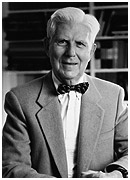Your FREE Handout
Cognitive Behavioural Therapy
Cognitive-behavioural therapy, or CBT, is a structured approach to counselling which helps clients reduce unhelpful thinking and modify self-defeating behaviour.
The underpinning idea in CBT theory is that our thoughts, feelings and our responses are connected.
It follows that if we can alter the way we think, we are better able to control our emotions and behaviour.
Cognitive Behavioural Therapy
CBT is strongly linked to American psychiatrist Aaron T. Beck’s cognitive therapy (CT) which he developed in the 1960s.

Beck decided that psychoanalytical approaches, especially around anger, put too much emphasis on past events rather than current thinking (such as the belief you will never find a partner or gain employment).
Beck developed the idea that the therapist, as well as disputing a client’s irrational thinking, could ‘educate’ them out of distress. He developed a series of educational programs which asked the client to check their thinking against reality.
Using worksheets and self-assessments, the client with the help of a therapist, slowly replaces negative thinking with more positive ideas of how they experience the world and themselves.

Beck’s CT and the development of CBT has its roots in the work of Albert Ellis, an American psychologist who in 1955 developed Rational Emotive Behaviour Therapy (REBT).
Ellis was a shy child. As a young man, he decided to challenge his fear of meeting the opposite sex by walking around Central Park in New York and speaking to 100 young women in one day.
Ellis believed that confronting irrational thinking was the best way of changing beliefs.
The most significant influence on Ellis was the ancient Greek philosopher Epictetus who practised Stoicism. Stoicism believes that:
The focus in CBT is to reframe the client’s thinking to embrace other possibilities.
Introduction to Cognitive-Behavioural Therapy
On first look, there are many similarities between REBT and CBT. Many professionals mistakingly believe that REBT is a subcategory of CBT, which is incorrect.
On closer inspection, there are some very significant differences between the two, mainly in the way the therapist challenges the client’s process of thinking, sometimes known as the disputing style.
Anyone who has listened to Dr. Ellis practising will notice how forcibly he challenges a client’s underlining thought process.
In REBT, a client may state:
“If I go to this party, people may not like me. I would be devastated if this happens.”
The therapist may respond by saying:
“Why is this so awful? Do you need to base your self-worth on other people views?”
Or perhaps:
“Could you imagine just being disappointed rather than being devastated if your concerns turn out to be true?”
As you can see, REBT attacks the underlying negative beliefs associated with the client’s thinking to replace them with less catastrophic thoughts.
In CBT, the therapist asks questions like:
“How do you know people will not like you? What evidence do you have to support this belief?”
“Can you think of a social situation where people liked you? Maybe this time things will be different.”
“Tell me what parts of your character people would notice and like?”
As you can see, the focus in CBT is to reframe the client’s thinking to embrace other possibilities, e.g., this is a different situation with different people.
As you can see, REBT attacks the underlying negative beliefs associated with the client’s thinking to replace them with less catastrophic thoughts.
In CBT, the therapist asks questions like:
“How do you know people will not like you? What evidence do you have to support this belief?”
“Can you think of a social situation where people liked you? Maybe this time things will be different.”
“Tell me what parts of your character people would notice and like?”
As you can see, the focus in CBT is to reframe the client’s thinking to embrace other possibilities, e.g., this is a different situation with different people.
Notice any broken link or issues with this resource? Kindly let us know by email
Email us